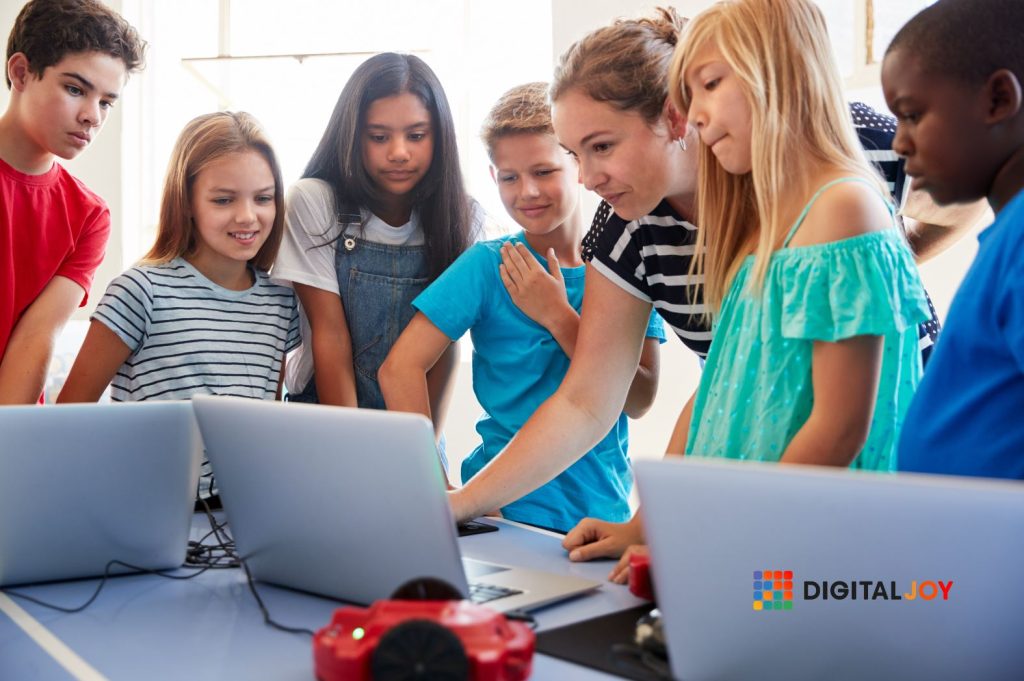When students are engaged in the classroom, they are learning and performing better.
But keeping students engaged in a post-pandemic world isn’t always easy. Only 46% of high school students reported feeling engaged at school – a steep drop from 65% in 2018.
Gone are the days of passive learning, where students sit quietly and absorb information. The focus for teachers has shifted towards creating an engaging environment that encourages students to be active participants in their own education.
Engagement plays a pivotal role in promoting deep understanding, critical thinking, and knowledge retention. And it is the responsibility of educators to implement strategies that foster student engagement and set them up for success. Luckily, there are tools to help!
Benefits of using student engagement strategies
Implementing student engagement strategies in the classroom is beneficial for both students and teachers.
When students are actively engaged, they are more likely to experience higher levels of motivation and interest in the subject matter. This intrinsic motivation leads to a deeper understanding and retention of knowledge and promotes essential skills like critical thinking, problem-solving, and collaboration. These skills are invaluable in preparing students for the challenges in the real world. Plus, engaged students tend to have better attendance rates, lower dropout rates, and improved overall academic performance.
Rather than a buzzword, engagement is a key driver of success in education.
Student engagement statistics
Research consistently supports the notion that student engagement is closely tied to academic achievement. According to a study conducted by the National Survey of Student Engagement, engaged students were more likely to earn higher grades, complete their degrees, and have a positive college experience. According to Gallup, students who report feeling engaged are also 2.5 times more likely to say they get excellent grades and 4.5 times more likely to be excited about the future.
Statistics highlight the critical role that student engagement plays in shaping educational outcomes and emphasize the need for effective strategies to promote engagement in the classroom.
Understanding different types of student engagement activities
Student engagement activities come in various forms, each serving a unique purpose in enhancing the learning experience.
- Active engagement involves hands-on participation, such as group discussions, debates, and problem-solving activities. This type of engagement encourages students to think critically, express their ideas, and engage in meaningful interactions with their peers.
- Emotional engagement focuses on creating a positive and supportive classroom environment where students feel comfortable expressing their thoughts and emotions. This can be achieved through activities that promote self-reflection, such as journaling or sharing personal experiences.
- Cognitive engagement involves challenging students’ thinking and promoting deep learning through activities that require higher-order thinking skills, such as analyzing, evaluating, and synthesizing information.
Understanding these different types of engagement activities allows educators to tailor their strategies to meet the diverse needs of their students.
Classroom engagement strategies for active participation
Active participation is a cornerstone of student engagement. By implementing classroom engagement strategies that encourage active participation, educators can foster a dynamic and interactive learning environment. Here are a few examples:
- Cooperative learning. This involves assigning students to work in small groups to solve problems or complete projects collaboratively.
- Real-world examples. By connecting the subject matter to real-life situations, students are more likely to see the relevance and importance of what they are learning, leading to increased engagement.
- Use technology. By using tech like interactive whiteboards, polling software, or educational apps, teachers can provide students with a more interactive and immersive learning experience.
- Start with a warm up. Have students break the ice with a small question or activity each day.
- Incorporate movement. A “seventh inning stretch” can help break up the monotony of sitting at a desk and get the blood flowing, which can increase concentration.
- Call on students randomly. To keep your class on its toes, write names on a popsicle stick or choose randomly each day.
Using technology to enhance student engagement
Technology has revolutionized the way we live and learn, and its impact on education is undeniable. When used strategically, technology can be a powerful tool in enhancing student engagement.
One way to leverage technology for engagement is through the use of online discussion forums. These platforms allow students to engage in meaningful discussions, share ideas, and collaborate outside of the traditional classroom setting.
Virtual reality (VR) and augmented reality (AR) are also emerging technologies that can greatly enhance student engagement. By immersing students in virtual environments or overlaying digital content onto the real world, these technologies provide a more interactive and immersive learning experience.
Gamification – the use of game elements in educational settings – can make learning more enjoyable and engaging. By incorporating elements such as leaderboards, badges, and rewards, educators can tap into students’ natural inclination for competition and achievement.
Future trends and predictions for student engagement in 2024 and beyond
As technology continues to advance, it is expected to play an even more significant role in student engagement in the future. Virtual reality and augmented reality are predicted to become more prevalent in classrooms, providing students with immersive and interactive learning experiences. Artificial intelligence is also expected to play a role in personalized learning, tailoring educational content to individual students’ needs and preferences. Additionally, the rise of remote and online learning due to the COVID-19 pandemic has highlighted the importance of digital literacy and the need for innovative online engagement strategies. The future of student engagement lies in embracing these emerging technologies and finding creative ways to leverage them to enhance the learning experience.
Student engagement is a fundamental aspect of effective education. It promotes active learning, critical thinking, and knowledge retention. By implementing student engagement strategies, educators can create a dynamic and interactive learning environment that prepares students for success in the real world. Try educational polling software Digital Joy Engage for free for 30 days here!




